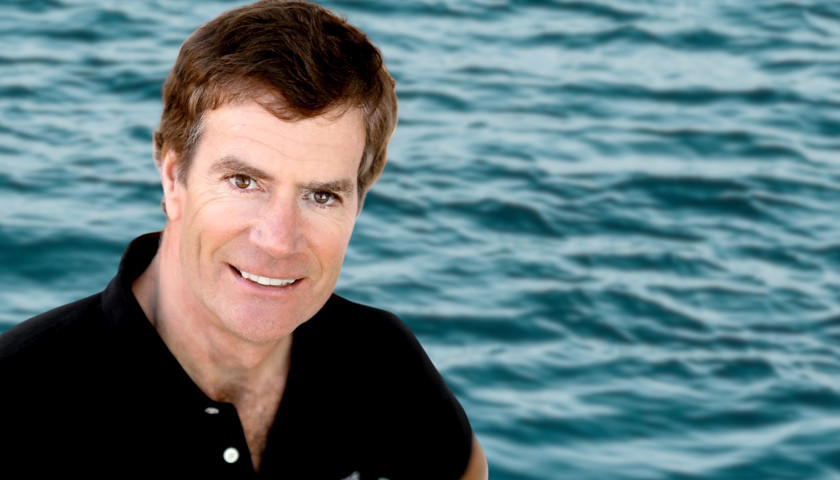Michigan native David Goode launched one of the country’s most successful snow and water ski companies in 1975 when he was just 19 years old. He was a member of the U.S. downhill ski team at the time, but his career was sidetracked by an ankle injury.
So he started inventing accessories to improve the skiing experience for his fellow competitors. His first innovation was an accessory called the “Racer Spacer,” a carrying system that prevented the base and edges of the skis from rubbing together.
He developed about 200 other accessory items and in its earliest days the company was called the “Ski Accessories Company.” One day, however, he was approached by a customer who ran a rental shop and expressed a need for better ski poles.
“All of their aluminum poles were bent,” Goode said in an interview, noting that the customer’s ski poles were “looking like pretzels at the end of the day.”
“When they bent, they would actually kink and fold up. So I invented and patented something we called the foam-filled ski pole,” Goode said. “So now they would bend, but they wouldn’t kink and they could be re-straigthened again.”
He received a patent for his improvements to the composite ski pole in November of 1993.
“In accordance with my invention, an extraordinarily strong, flexible, shock absorbing, relatively light weight and aesthetically appealing ski pole is provided which overcomes the performance disadvantages of prior art aluminum and composite ski poles. In general, my ski pole comprises a shaft of filaments or fibers of aramid, carbon, glass or the like in a polymeric matrix,” Goode wrote in his patent application.

“With this physical combination, I have been able to achieve a commercial quality ski pole which is not only aesthetically appealing and modern in appearance, but which effectively absorbs shock loads through moderate, controlled bending, and is virtually indestructible in use,” he added.
In short, it was a carbon-fiber ski pole that could bend without breaking. Goode’s ski poll was a hit with racers so he decided to apply a similar technology to waterskis. By 1998, he received a patent for a foam-core waterski that was half the weight of its competitors.
“What we have is a ski that can actually flex and bend. We let it longitudinally be very soft, but we have it very torsionally stiff. What that does is let the ski roll to edge, turn very easily, but then it just holds like mad in the turn. So they’re very light weight—a lot less energy to ski,” Goode explained.
According to Company Week, Goode’s waterskis became a fixture on the pro waterskiing circuit.
“It really took off at the tournament scene and has dominated ever since,” said Goode.
He then transitioned into creating carbon-fiber snow skis and acquired Volant’s operation out of Boulder, Colorado in 2001.
“With the acquisition of this state-of-the-art equipment, I’m hopeful we can expand production and build the lightest skis, utilizing the latest material and technologies available,” Goode said at the time.
Goode’s company was based in Michigan up until 2004, when he decided to move to Ogden, Utah, a perfect environment for testing new concepts. Then in 2011, Goode announced that he would move production of his skis from a factory in China to Ogden.
“As an early innovator, we are bringing jobs back to the United States. And we think more will come back to the United States,” Goode said in a 2011 interview. He noted that he was born and raised in Detroit so being able to play a small part in bringing manufacturing jobs back to the United States was important to him.
“A quarter of my classmates’ dads worked for the auto industry. Those were our heydays and I think the darkest hour now passed. The U.S. used to be a great manufacturing country and I see it coming back,” he said.
His company, now called GOODE Ski Technologies, controls about a third of the U.S. ski-pole market and nearly half of the ski-rental market.
“We’re the industry leader,” Goode said. “We build more ski poles than all of the other companies combined.”
Goode has pointed to the company’s “three-legged” production approach as one of the reasons for its success.
“Poles are a substantial part of our business. In snow skis, we’re a little fish in a big pond. It water skis, we’re a big fish in a little pond,” he explained.
He also shared some words of wisdom on the challenges would-be inventors can expect to face.
“When you’re pioneering something, you’re leading the way,” he said. “You get a roll of carbon fiber and it doesn’t come with directions. There’s a science and a black art of designing these things.”
– – –
Anthony Gockowski is managing editor of Battleground State News, The Ohio Star, and The Minnesota Sun. Follow Anthony on Twitter. Email tips to [email protected].
Photo “Dave Goode” by Dave Goode.





